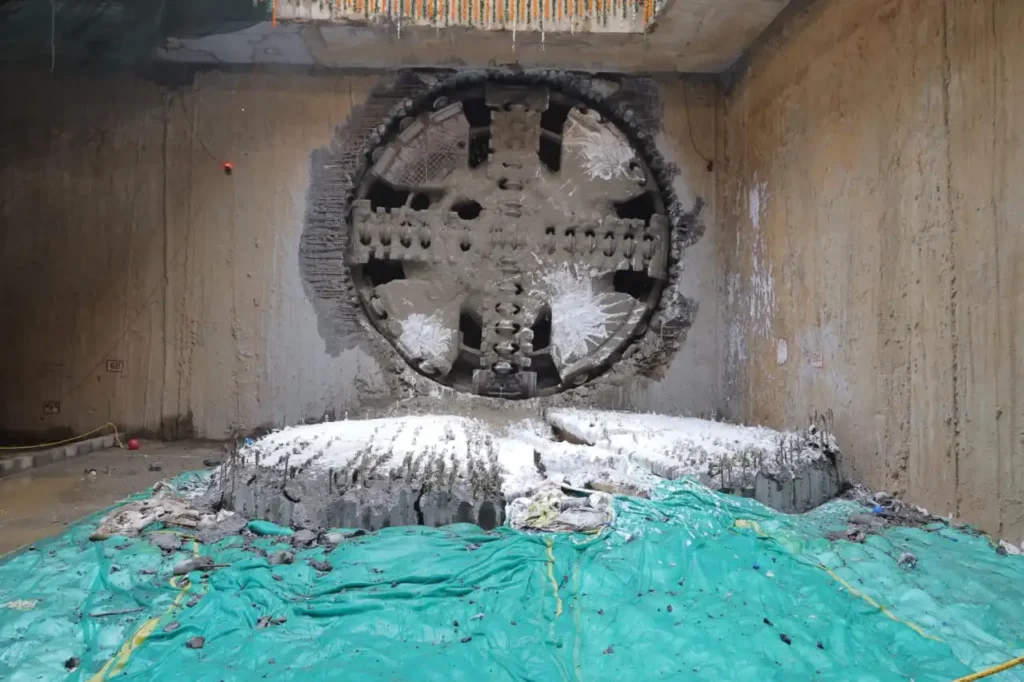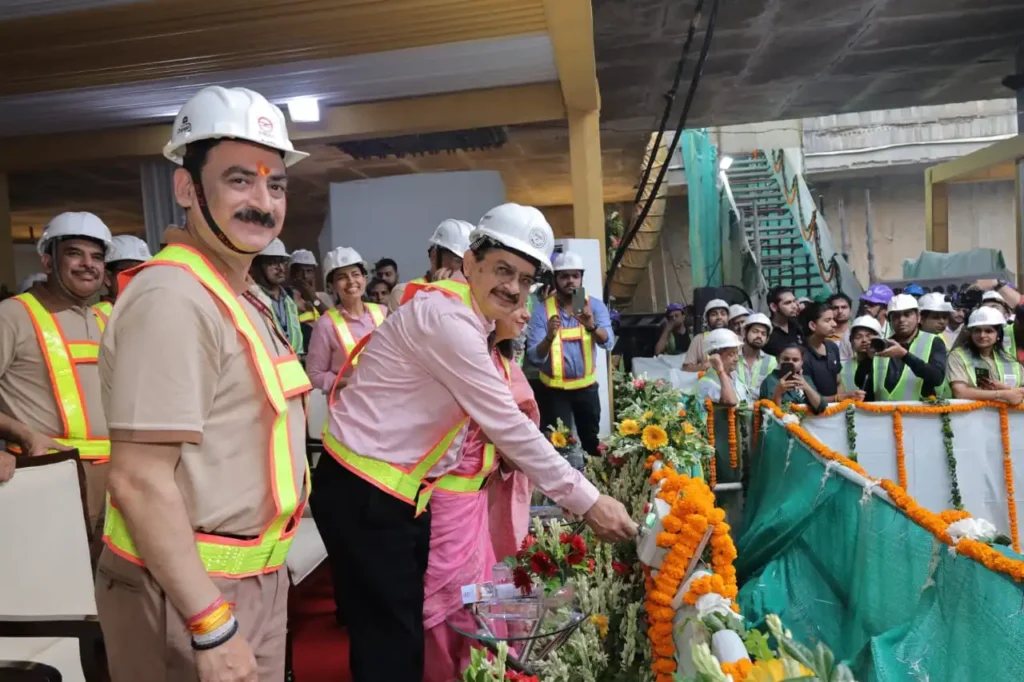New Delhi — In a major development under Delhi Metro’s Phase 4 expansion, the Delhi Metro Rail Corporation (DMRC) has successfully completed the tunnelling work between Tughlakabad and Tughlakabad Railway Colony stations on the Aerocity–Tughlakabad corridor. The milestone was marked by a tunnel boring machine (TBM) breakthrough at the Tughlakabad Railway Colony site earlier today.


The breakthrough event was witnessed by Shri Naveen Gulati, Member (Infrastructure), Railway Board, along with senior DMRC officials. This tunnel forms part of the Golden Line (Aerocity–Tughlakabad corridor), one of the three priority corridors being constructed under Phase 4.
Key Tunnel Construction Details:
- Length of Tunnel: 792 metres
- Depth: Approx. 18 metres
- Diameter: Inner diameter of 5.8 metres
- TBM Length: 91 metres
- Contractor: M/s Afcons Infrastructure Ltd
- Tunnel Rings Installed: 559
Using the Earth Pressure Balancing Method (EPBM), the TBM successfully bored through mixed geological strata while minimizing ground disturbance. The tunnel lining was achieved with precast concrete rings, manufactured and steam-cured at a mechanized casting yard in Mundka. These advanced construction methods ensured structural stability and early-strength concrete performance.
Also Read: Delhi Flyover Repairs Begin: Ageing Infrastructure Gets ₹3,800 Cr Makeover
The Aerocity–Tughlakabad corridor features a total of 19.343 kilometres of underground track. Across Phase 4, a total of 40.109 kilometres of underground lines are under construction, signifying the DMRC’s continued commitment to expanding Delhi’s sustainable transport infrastructure.
To ensure safety, DMRC deployed high-precision instruments to monitor ground movement and structural integrity during the tunneling. The technology ensured that no settlement or structural impact occurred above ground, even in densely populated or developed areas.
TBMs and Delhi Metro:
DMRC has used TBMs since Phase 1 to carry out tunneling in congested urban environments without disturbing surface structures. In Phase 3 alone, more than 30 TBMs were employed to construct approximately 50 kilometres of underground metro lines—setting new benchmarks in Indian metro infrastructure.
